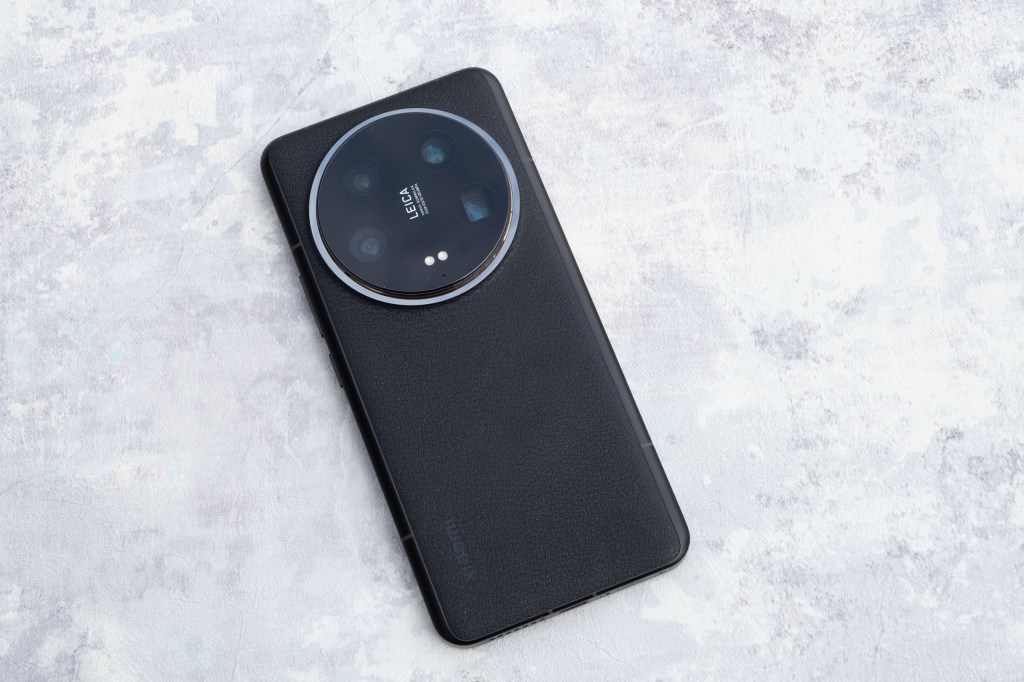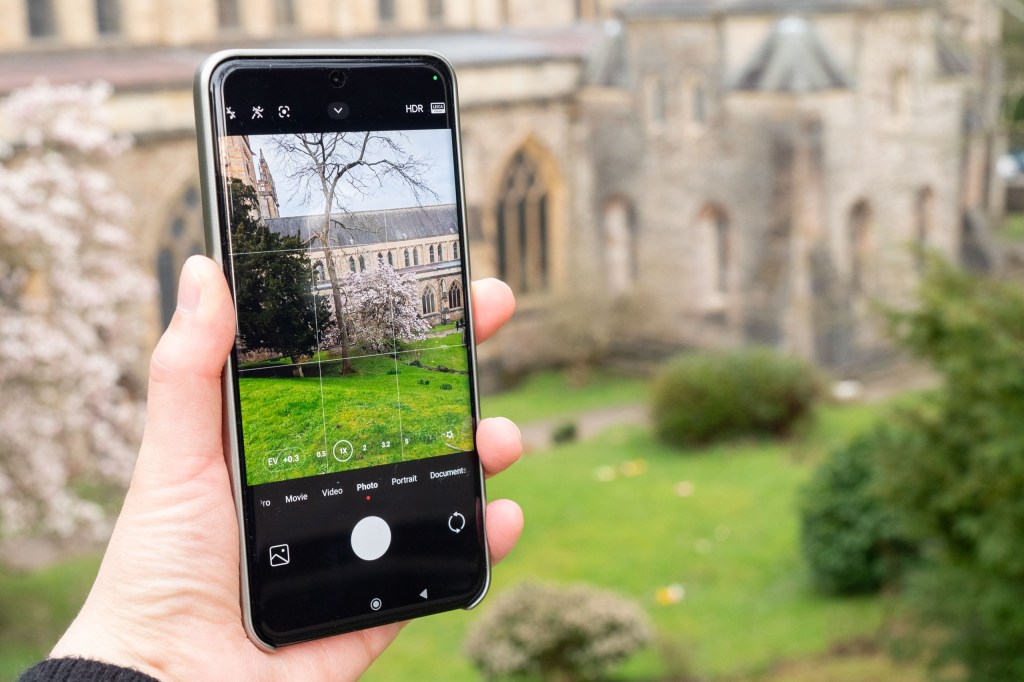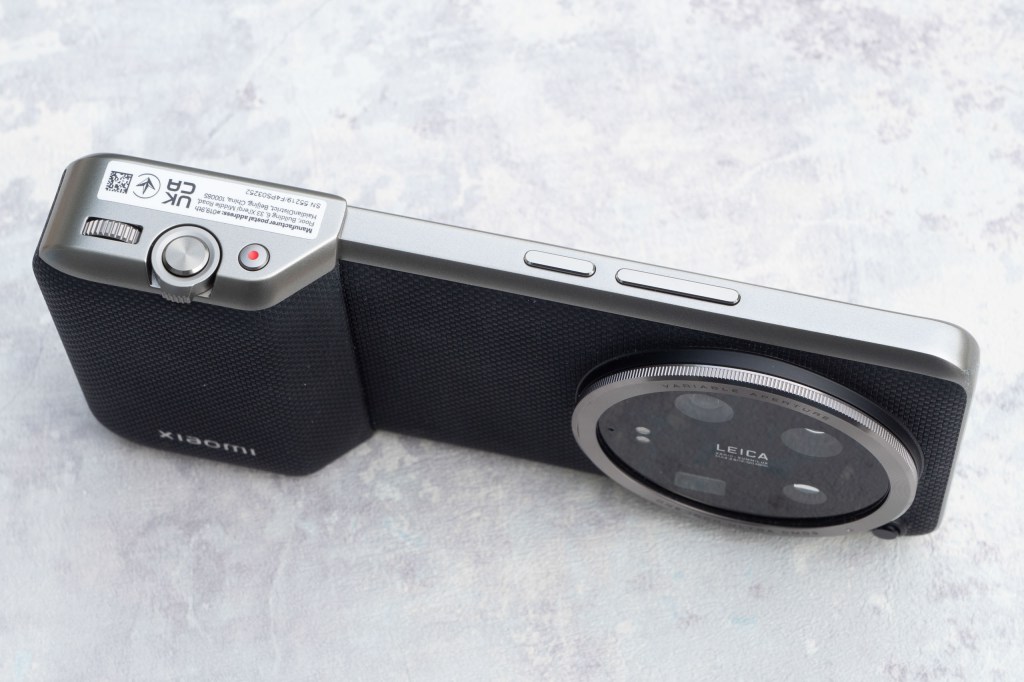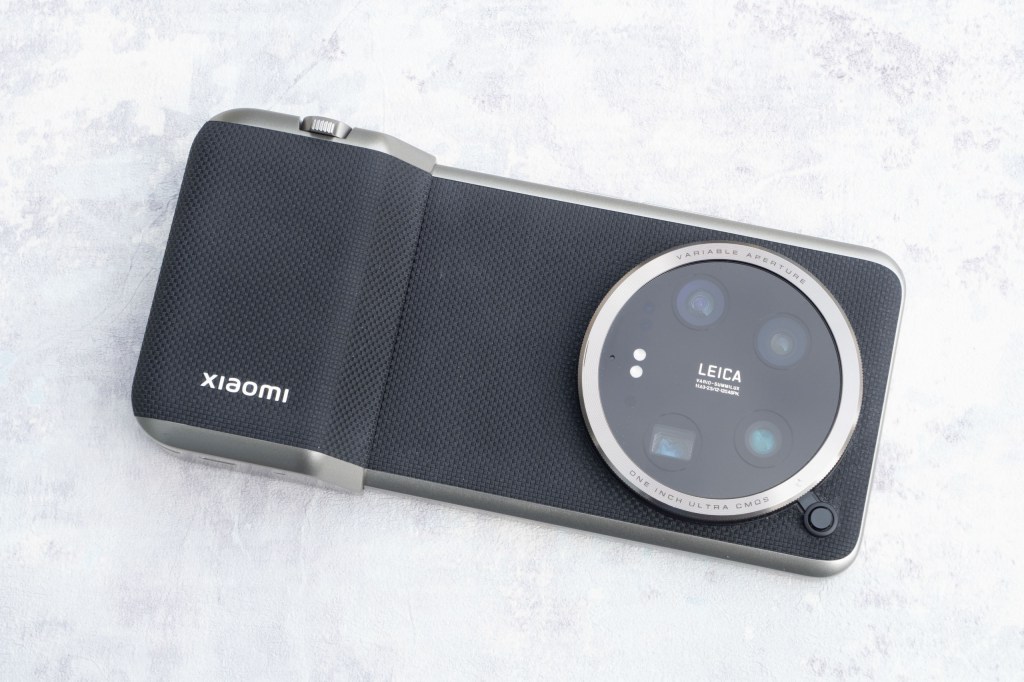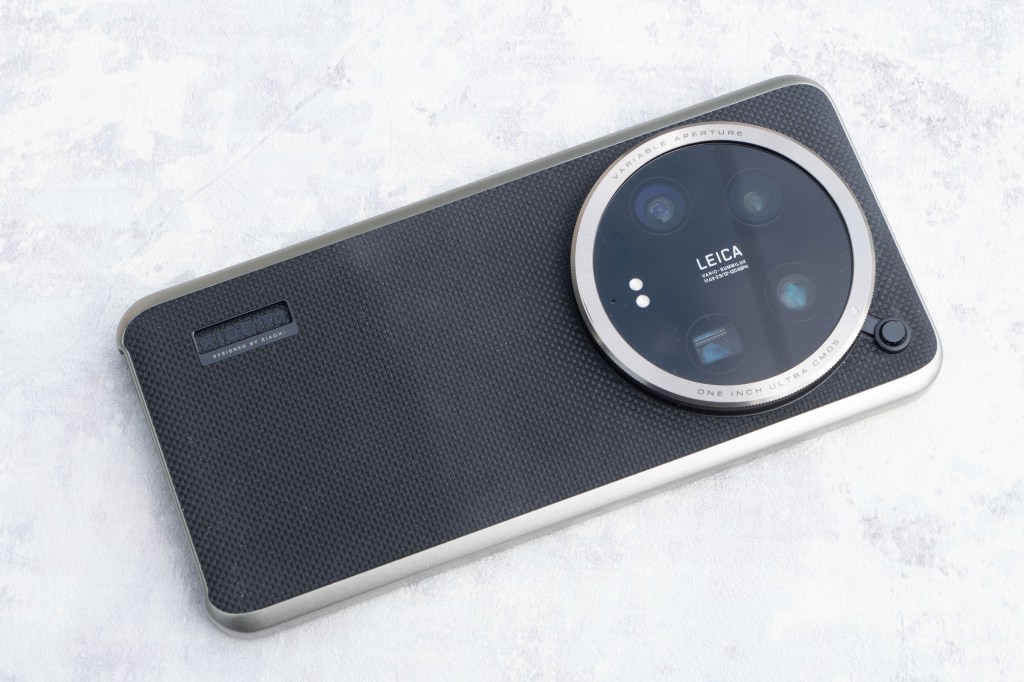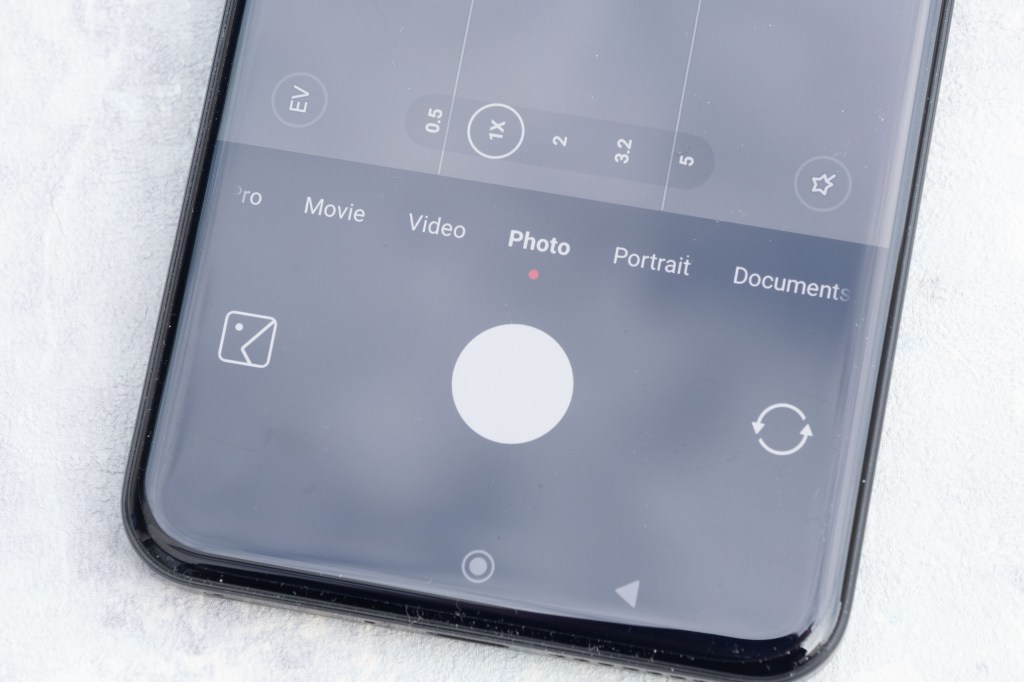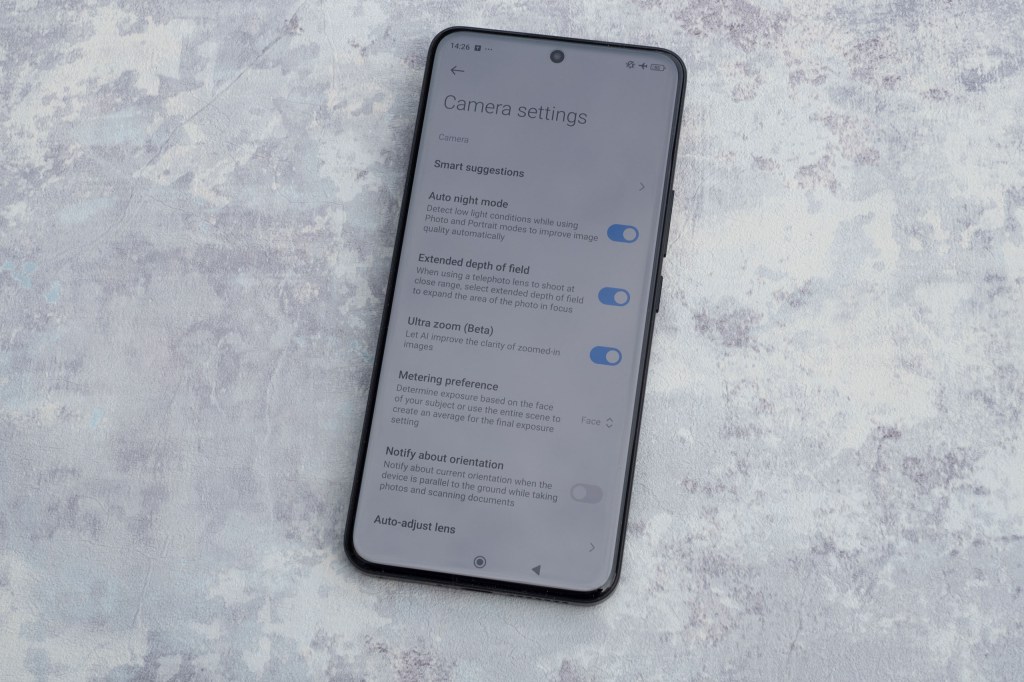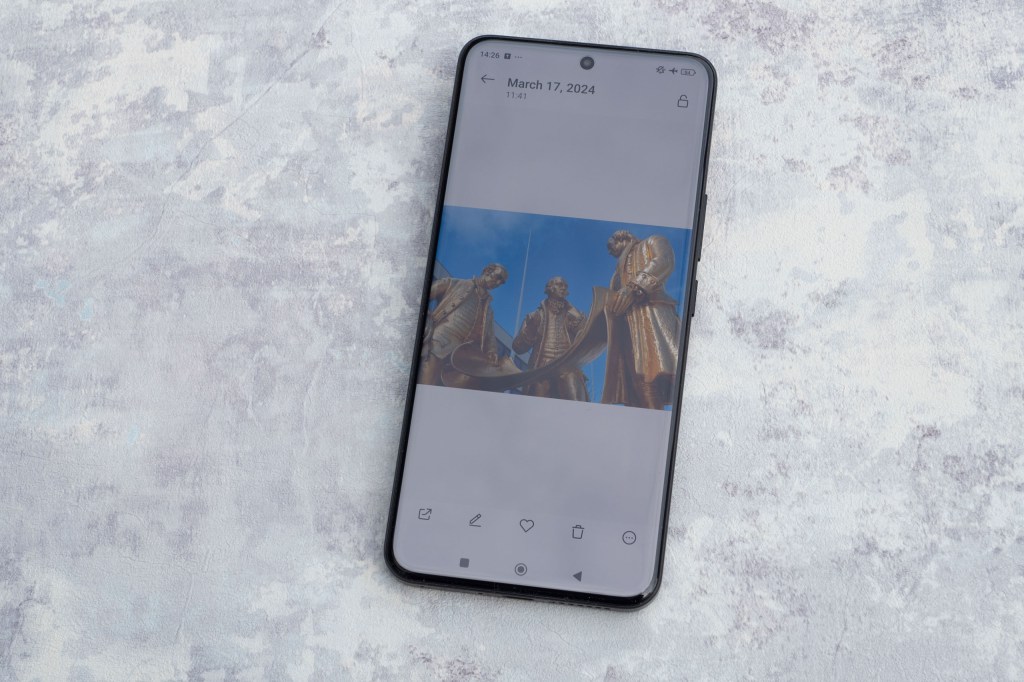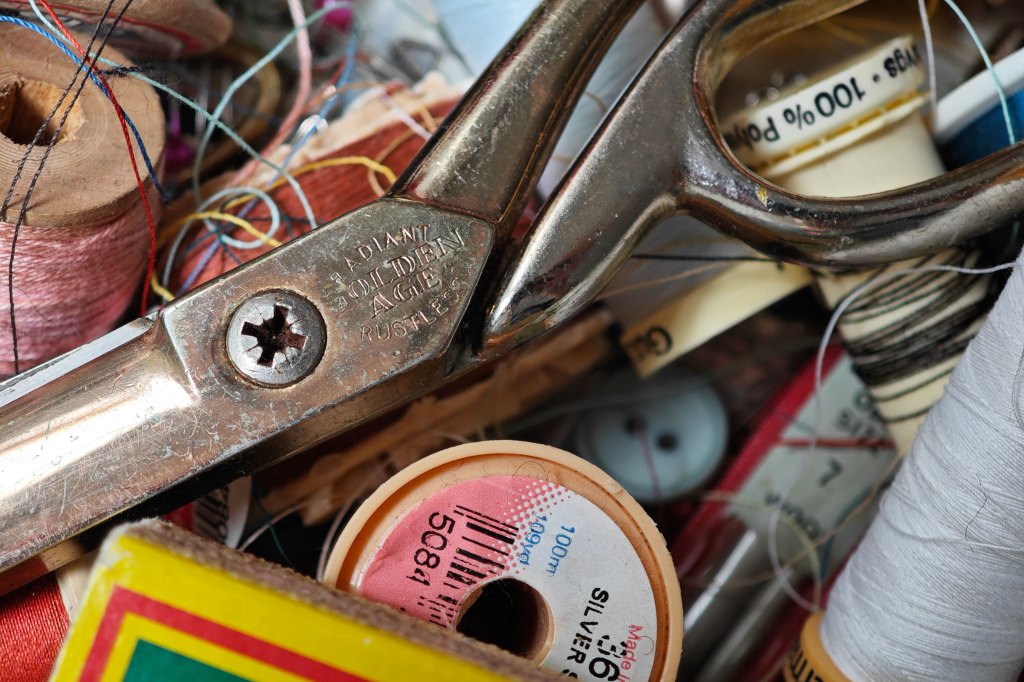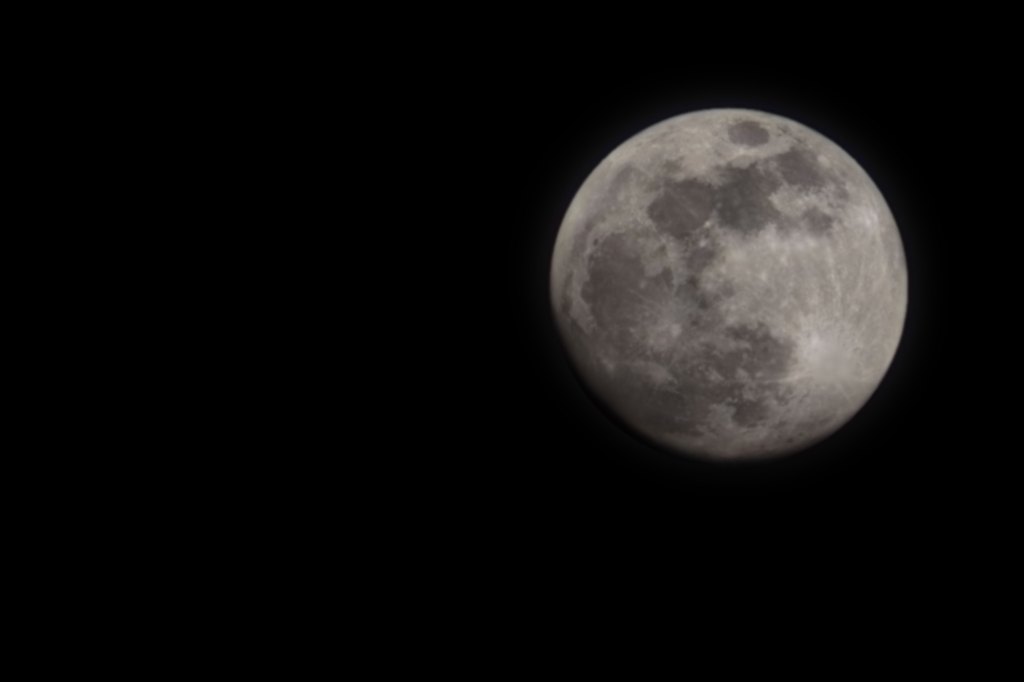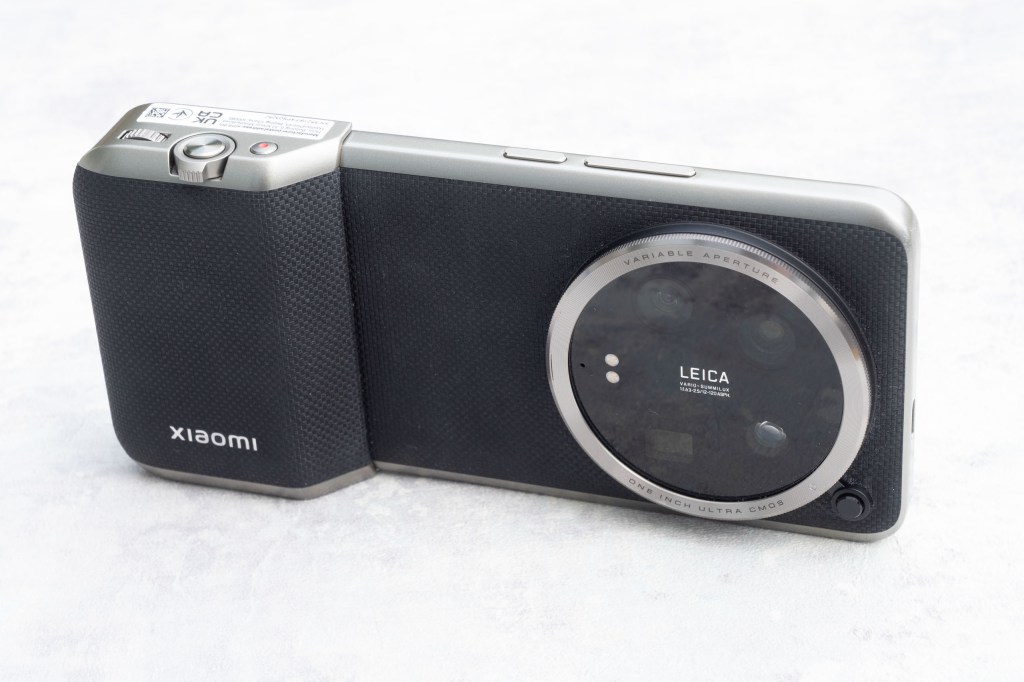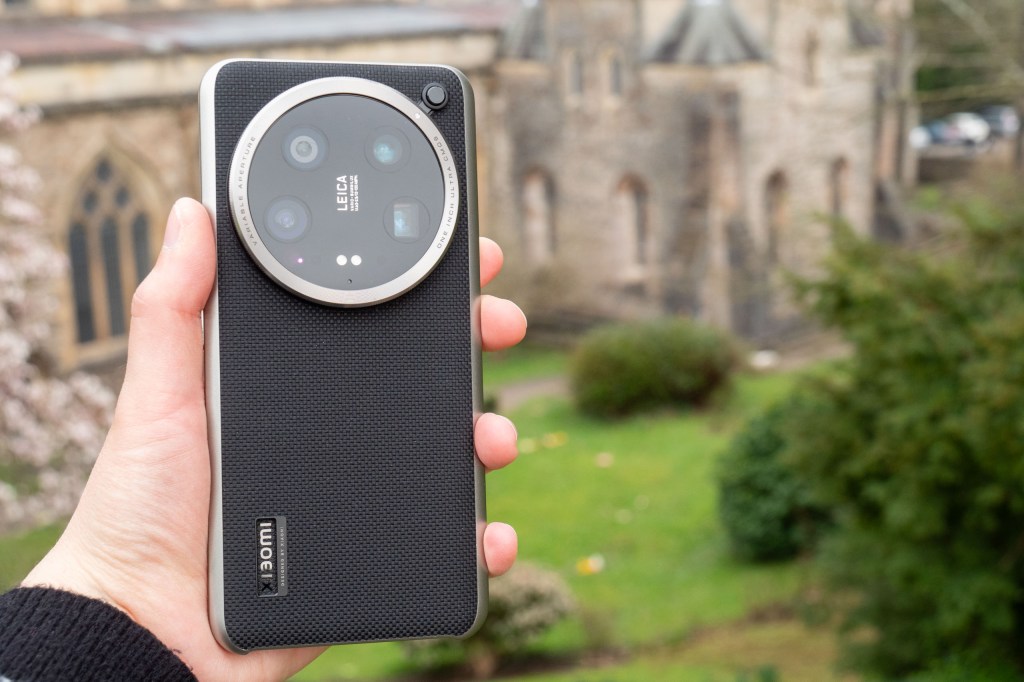Amateur Photographer verdict
One of the best performing smartphones on the market with an impressive array of cameras that deliver excellent image quality. All this comes at a flagship price, however.- One-inch main sensor
- Leica SUMMILUX lenses with variable aperture for main camera
- Four 50MP sensors
- Photography kit available
- High price
- Selfie camera doesn’t have AF
- Not available in every market
In our judgement, the Xiaomi 14 Ultra and new 15 Ultra merit their places among mainstream rivals like Apple and Samsung for the best camera phones for photography. In partnership with German stalwart Leica, Xiaomi has become well-known for the superb cameras in their phones. The 14 Ultra’s specifications retain much to appeal to photographers. It still isn’t cheap, but around *$300 / £300 less than the Xiaomi 15 Ultra, represents some value over established brands.
Leica has collaborated with Xiaomi for a while now, having previously partnered Huawei. For this model, we see high-end Summilux lenses used by Xiaomi for the first time – though this branding has been used on previous smartphones such as the Huawei P40 Pro.
High-level specifications don’t come cheap, though. The Xiaomi 14 Ultra is in the price domain of the Samsung S24 Ultra and iPhone 15 Pro Max. Read on for more on these high-level specifications.
* at the time of publication, there is uncertainty and fluctuation in prices and availabilty. Figures quoted are a guide and subject to change; as is availability.
At a glance:
- around $1,045 / £1,005
- 50MP f/1.6-4.0 23mm equivalent camera with one-inch sensor
- 50MP f/1.8 12mm equivalent ultrawide camera
- 50MP f/1.8 75mm equivalent 3x telephoto camera
- 50MP f/2.5 120mm equivalent 5x telephoto camera (periscope lens)
- 8K video at up to 30fps
- 4K video at up to 120fps
- 6.73-inch, 3200 x 1440 pixels, 3000 nits peak brightness, 120Hz LTPO AMOLED screen
- Operating system – HyperOS based on Android14
- Processor – Qualcomm Snapdragon 8 Gen 3
- 5000mAh battery (international), 5300mAh battery (China)
How we test camera phones
We review smartphones from the perspective of choosing one for its photography and camera performance. We look at what the Xiaomi 14 Ultra offers, and the features included for photography and video, paying particular attention to the cameras on the phone, photo editing capabilities, as well as the output from each lens.
Features
There is a huge number of enticing features for photographers packed into this phone; it really earns the “Ultra” in its name – ‘Pro’ wouldn’t do it justice. With several headline grabbing features, on paper at least it stacks up to a very impressive spec sheet.
Let’s start with the fact that it has four cameras, all of which have high-resolution 50MP sensors, and all of which are fronted by Leica Summilux branded lenses: a fine marker of quality. Not only that, but the main sensor is a large one-inch type, which is much larger than sensors found in almost every other smartphone out there – and certainly bigger than from the mainstream brands of Samsung, Apple and Google.
What’s more, the main lens has a variable aperture, giving you the option to choose between f/1.6-f/4.0. A variable aperture isn’t something we often see, with Samsung including it in its S series smartphones for a while but dropping it for its most recent models. The Xiaomi 13 Ultra allowed you to choose between f/1.9 or f/4.0, but the 14 Ultra goes a step further by allowing f/1.6, f/2, f/2.8 or f/4.0.
There’s other enticing features too, including special coatings to prevent typical lens problems such as glare. Macro photography is available with three out of the four lenses, so you can really get creative with your close-ups. Six focal lengths are available losslessly, with 2x and 10x using the central portion of a sensor to create images (known as in-sensor zoom). You can also extend digitally up to 120x – beating even the 100x of the Samsung S24 Ultra.
Once you add in software features like Street Photography and Master Portrait modes and blend with computational photography wizardry, the package for photographers really is something quite special.
Other interesting specifications include the ability to shoot in raw format, 8K video recording, a Snapdragon 8 Gen 3 processor, a 6.73-inch screen and a nano-tech vegan leather back.
If all of that isn’t enough to entice you in, consider that a “photography kit” can also be purchased separately, giving you a grip which transforms the phone into a more traditional camera shape and includes a 67mm filter adapter too.
All in all, it’s safe to say that if all the specs live up to their billing, this is a phone that’s going to be very hard to beat. So, what’s the catch? Well, assuming you can get hold of one – there isn’t one really. Yes, it’s expensive, but so are plenty of others out there. Really, it might come down to brand perception and awareness – many here in the West are naturally prone to prefer American or South Korean manufacturers, with Chinese brands not being quite so popular.
Let’s see how those specs shape up in real-world usage though…
Handling and design
The Xiaomi 14 Ultra’s design is fairly different from most others on the market.
While it’s still a rectangular box, the back features nano-tech vegan leather, which is quite the departure from the super-shiny glass backed phones we’re used to seeing. It helps with grip and also makes it less prone to slipping. Xiaomi says this makes the 14 Ultra 6x better at resisting wear than its predecessor, and it certainly looks attractive too. That said, a case comes in the box with the phone, which emulates the look of the back and gives a little extra protection.
The front of the phone uses Xiaomi Shield Glass. Here we’ve got a boast of 10x improvement in “drop resistance” compared to the predecessor. It’s also IP68 rated, giving you water and dust resistance.
At 6.7”, the phone is on the larger side, but stays on the right side of manageable. It’s the same screen size as the iPhone 15 Pro Max, and smaller than the Samsung S24 Ultra. You can buy the phone in either black or white (we’ve been using the black one).
The AMOLED display is nice, bright and detailed, with a peak rate of 3000 nits and an HDR display. It also adjusts automatically in bright conditions, which is always a bonus.
For those who want to push the handling a little further, the Photography Kit can be purchased separately at £179. With this, you get a hand grip which gives you a shutter button, command dial and a zoom ring. We’ve seen things like this before turn a pocket-friendly phone into a difficult to handle monstrosity, but it’s carried out well and you can take it on and off with ease. Another bonus is that the grip has a battery inside it which can give your phone a power boost too.
On the downside, I found on occasion the grip simply didn’t work if it had been left on the phone for a while. Simply removing it and clicking it back on again solved the problem, so it’s not the end of the world but it could be a little smoother in operation.
With the kit you also get a 67mm filter adapter. I haven’t used this, but can see where it would be useful for those who want to push the limits of their smartphone even further.
Native camera app
We are used to seeing well-featured native camera apps from Android models, and the 14 Ultra is no different. Indeed, as well as all the usual modes we’ve come to expect, there are some other useful shooting options too.
The default mode is “Photo” which is where you’ll likely do the majority of your shooting. Here you can access all four of the lenses, plus the two focal lengths which use in-sensor zoom (2x and 5x). You can also pinch outwards to zoom to 120x if you feel so inclined.
A small arrow at the top of the screen can be tapped to reveal some extra settings. The variable aperture can be left to Auto for it to decide for itself what is best, or you can take control and choose between four different apertures between f/1.6 and f/4.0 yourself. There’s also the ability to switch on things like super macro, Motion tracking focus and gridlines.
You can shoot in HDR, or switch that off, and you can also switch between “Leica Vibrant” and “Leica Authentic”. You can also add filters too, such as Leica “BW Nat” (black and white natural) and other film-simulations. One downside here is that you can’t shoot in raw format in this mode, for that you’ll need to switch to the Pro mode.
The Pro mode also gives you the option to use all the different lenses, as well as change various shooting parameters such as white balance, focus mode, aperture, ISO and exposure compensation. Here, you can also shoot in Leica Authentic or Leica Vibrant colour modes, as well as the different filters.
Portrait mode further plays on the Leica idea, giving you the option to shoot in different focal lengths – 23mm, 35mm, 50mm and 75mm. Or, alternatively you can choose the slightly different “Standard” (23mm), “Documentary” (35mm), “Swirly Bokeh” (50mm), “Portrait” (75mm) or “Soft Focus” (90mm) options which are packaged together as the “Master Lens System”.
Night mode automatically activates should the phone detect low light levels and can be used across all of the different lenses. It’s also available to choose manually, too. The “Supermoon” feature is designed for shooting the night sky – this seems to be a way of photographing the moon with the assistance of AI technology. Is it fake? Almost certainly, but it’s a bit of fun anyway.
Similarly, macro focusing should automatically activate if you bring the phone close to aa subject. If you switch to using one of the zoom lenses, however, you’ll also get the option to decide whether you want to have a blurred background or keep a greater depth of field – just tap the option you want.
Street photographers may be drawn to the “Fast Shot” mode which changes the user interface into a rangefinder style. You can see outside the frame to help capture unfolding events, and the lenses are listed by focal length (35mm, 50mm etc) rather than 1x, 2x and so on. You also have the option to manually focus and adjust exposure compensation, too. Aperture (when using the 1x lens) can also be controlled here.
There’s a few other shooting modes, notably time-lapse, long exposure, 50MP and some video modes such as Director Mode. Video fanatics also have other special video modes, including the straightforward “Video” and the more in-depth “Movie” mode. Switching on MasterCinema in either of these modes enables HDR recording in 10-bit Rec.2020.
Image quality and performance

Xiaomi has been producing some excellent smartphones for some time now, but the 14 Ultra truly does sit at the top of its line-up in terms of quality of results.

The one-inch main sensor is the best performer, as we’d expect. When technology like this can now be found on smartphones, it’s no wonder that even premium compact cameras which pack similar technology are dwindling in popularity.
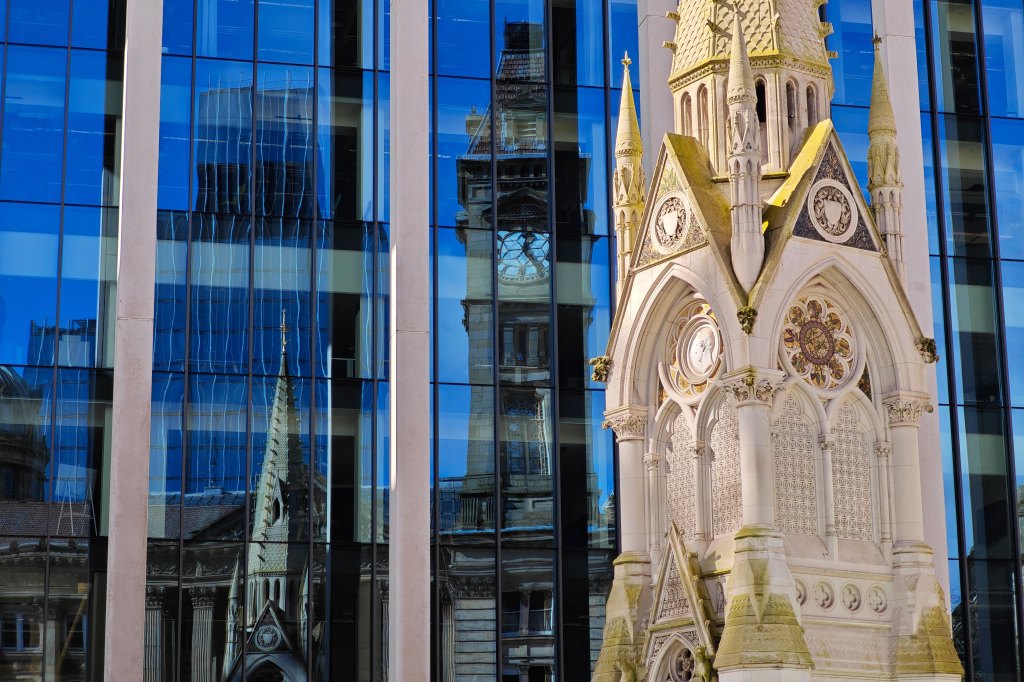
Images from the Xiaomi 14 Ultra have lots of detail, show good colours and dynamic range and, thanks to the larger sensor, you can get shallower depth of field effects without having to resort to using software recreations.

Having that large sensor also stands the camera in good stead when it comes to low light work, with a good amount of detail, not too much smudging and crisp results.

Leica Summilux lenses really do seem to add an edge of sharpness and high-quality, and there’s very little to complain about for the most part.
Of course there isn’t just one sensor/lens here, but three more, with all three producing good results in a range of different scenarios. The fact that all four of the sensors are 50MP, and all four are fronted by Leica Summilux, is quite something.

The ultrawide lens also puts in a very good performance, being fairly free from distortion and also producing good shots in low light. Both the zoom lenses also give good results – it can often be the case that any additional fourth lens is a bit of a marketing gimmick that seldom gets used, but in this case, the results justify engaging the lens when you want to get closer to the subject. These two lenses are not quite so good in low light as the 1x and the ultrawide, but for sharing on social media and so on, they do a good enough job.

Further good news is that colours are great from all of the lenses. Even better, between the four lenses, colours are pretty well matched. If you’re taking a series of images from the same spot, you can expect uniformity.
Digital zooming is a useful option to have if you really do need to get close to the subject. As ever, 120x really is just a gimmick that nobody is likely to use for anything they actually want to keep and look at again. However, more reasonable zoom figures of 10x, 20x, and even sometimes 30x, produce usable results if the light is good.

Portrait mode works very well and produces some fantastic results. As we tend to see, there is some outlining around fine areas of hair if you examine very closely – however it’s less obvious than we might expect from a cheaper model, especially when viewing them at typically small social media type sizes.

The selfie camera doesn’t have AF, but it nevertheless does a good job. If you leave it on the default “beauty” setting, then you tend to get slightly plasticky results, but than can always be switched off if you don’t like it. You can also shoot in Portrait mode and use the front camera, leading to nice bokeh in the background – as you can see in our example shot.
Macro photography capability is something we’re seeing as a pretty standard specification for high-end phones, but you get extra functionality with the 14 Ultra. The results are very good, producing better images than we’ve seen from models such as the Samsung S24 Ultra. In fact, I rate the Xiaomi 14 Ultra as one of the best smartphones for macro photography out there.
This is not the first camera to boast about its ability to shoot the moon, but the Xiaomi 14 Ultra results are pretty good – not withstanding the fact that the moon may or may not be assisted into creation using AI. Still, it’s fun to experiment with on nights where the moon is bright and crisp.
Video results are great too, with plenty of flexibility for those who want to produce a lot of video content. You can record at up to 8K, although 4K or Full HD will suffice for most people. All four lenses can be used while recording 4K, which is a bonus. Detail is very good, and so is overall stability – even when shooting handheld. Sound is OK, but it is prone to picking up wind when recording outside, so those who do this a lot may wish to invest in external microphones and accessories to combat this.
Value for money
The price has come down since its release, unlike the Samsung Galaxy S24 Ultra, which also has four lenses; but has just one high resolution sensor, and no one-inch sensor or Leica glass to boast about.
In fact, the Xiaomi is cheaper when you compare like-for-like models. Samsung’s S24 Ultra with 512GB storage will set you back $1,400 / £1,349.
The Xiaomi is also cheaper than the equivalent iPhone 15 Pro Max model. That costsaround $1,150 / £1,099 for the 512GB version (the 256GB model is $1,030 / £1,047).
Despite the high asking price, the 14 Ultra certainly can be said to offer good value for money. Other models are cheaper, including from its own line-up, but for the best of the best then you might consider it. It will also constitute good value if it saves you from buying additional camera gear. It may also last you longer than most before you feel compelled to upgrade.
If you really don’t want to part with the cash, there’s a Xiaomi 14 for under £600 that offers some similar specifications to the Ultra and may be a better balance between cost and performance.
All that said, if you’re in a market where it’s hard to get hold of a Xiaomi, then value or not is almost irrelevant. In the US, there are some grey market imports, but we’d always advise caution with those.
Verdict
Those looking for the top phones for photographers have a lot of choice these days. Generally, however we tend to see the same three names being mentioned time and again – Samsung, Apple and Google.
However, if you’re happy to look outside those big recognisable brand names (in the West anyway), then there are some fantastic alternatives to be had – the Xiaomi 14 Ultra is one of them.
This is quite easily one of the best performing smartphones on the market for photography, with a one-inch sensor and four Leica Summilux lenses really setting it apart from its rivals. The images and videos that it produces easily match and often surpass those from the “bigger” brands.
At £1,299 it’s not a cheap proposition by any means, however, you get an awful lot for your money – more than similarly priced Samsung or Apple phones – so it can be considered good value.
Overall, the Xiaomi 14 Ultra is a fantastic choice for anyone who prioritises the quality of the onboard camera on their smartphone – the only major downside is its lack of availability across the globe.

Specifications
| Ultra-wide camera | 50MP 12mm equivalent, f/1.8, dual pixel PDAF, 1/2.51” sensor |
| Wide camera | 50MP 23mm equivalent, f/1.6-4.0 (variable aperture), 1”-type sensor, multi-directional PDAF, OIS |
| Telephoto camera (1) | 50MP 75mm equivalent, f/1.8, dual pixel PDAF, OIS, 1/2.51” sensor |
| Telephoto camera (2) | 50MP 120mm equivalent periscope camera, f/2.5, 1/2.51” sensor, dual pixel PDAF, OIS |
| Front selfie camera | 32MP 22mm equivalent, f/2.0, 1/3.14” sensor |
| Display | 6.7-inch LTPO AMOLED, 3200 x 1440 pixels, 120Hz, 3000nits (peak) |
| Operating system | HyperOS, based on Android 14 |
| Dimensions | 161.4 x 75.3 x 8.5mm |
| Weight | 223g/230g |
Related reading:
- Xiaomi 14 Review – the best Leica for under $900?
- Xiaomi 13T Pro Review – Leica on a budget
- Xiaomi 12T Pro Review – 200MP too far?


